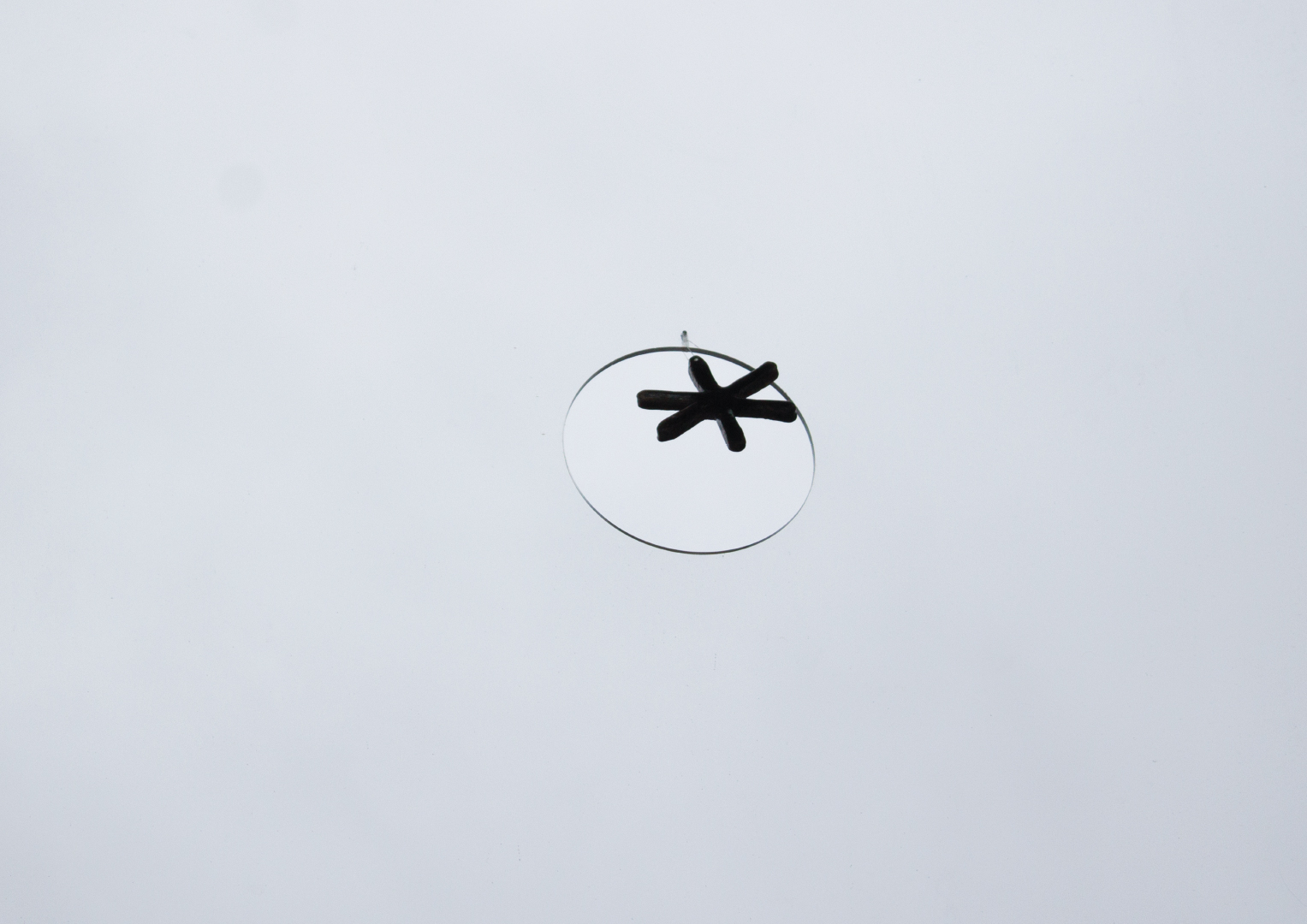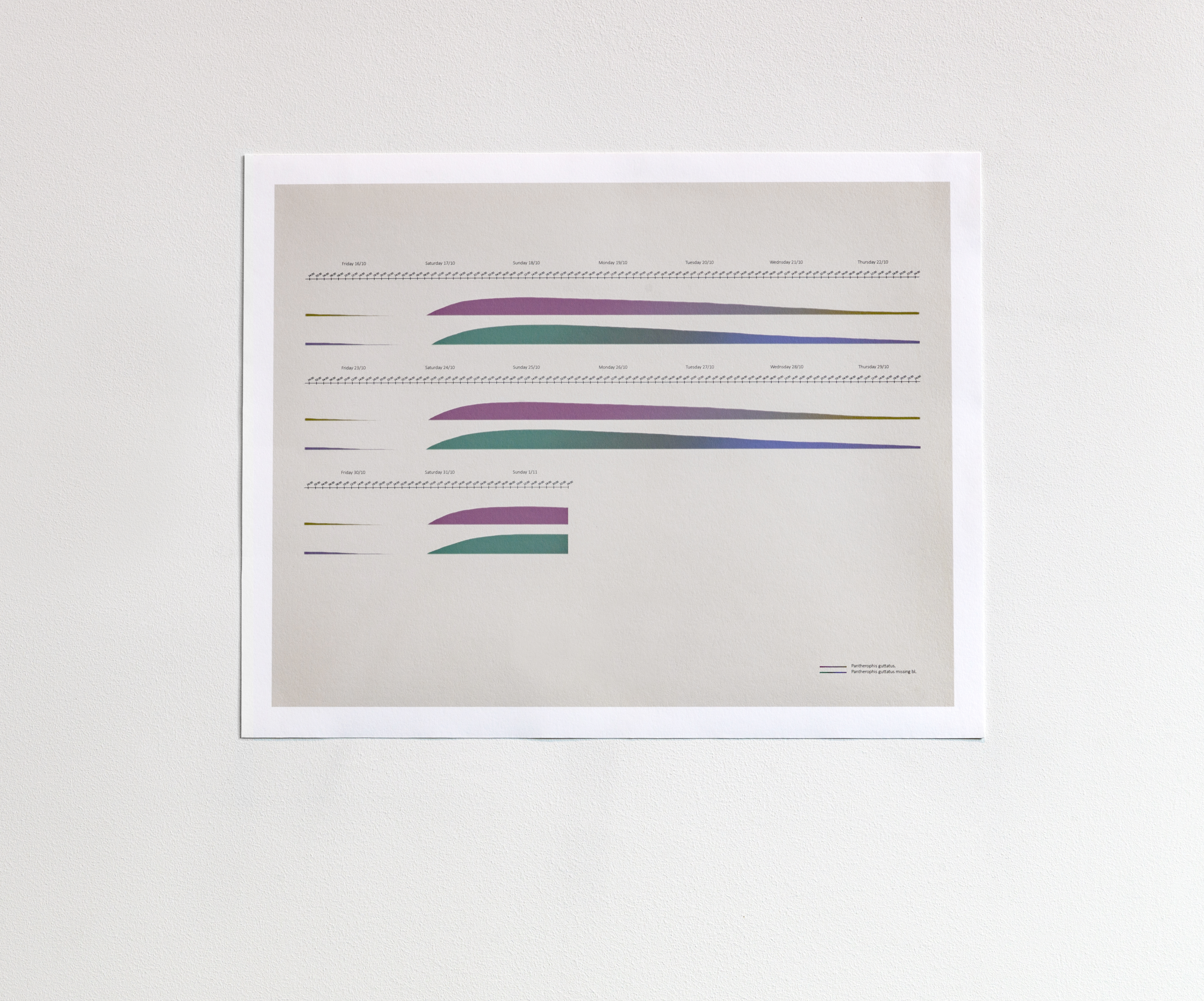Helices
Het Hem
Zaandam, the Netherlands
2020

Helices, 2020
Installation view, het Hem, Zaandam, the Netherlands.
Two videos, simultaneously appearing as batons and timekeepers, are playing in a repeat. A schedule of the actual feeding process of two snakes, mapped out in print, is mounted high on an adjacent wall. The cutting of a hole in a window and an object based on Galileo’s notes hanging in it completes the three components of this installation, or a mini-scheme of celestial bodies, metrics, and digestive enzymes.

In 1610, Galileo recorded for the first time the shifting positions of Jupiter’s moons, marking each observation with ink and the corresponding time. These notes were not mere representations but evidence, material traces of celestial motion. A one-to-one drawing that once circulated became an active instrument of knowledge, enabling others to verify, extend, and reinterpret his discoveries.
In this piece, a circular hole was cut into a window, and within it, one of Galileo’s notes depicting Callisto has been cast in resin and suspended. Subject to the wind, it moves freely, continuing to interact with its environment as a material that shapes perception and
thought.
In this piece, a circular hole was cut into a window, and within it, one of Galileo’s notes depicting Callisto has been cast in resin and suspended. Subject to the wind, it moves freely, continuing to interact with its environment as a material that shapes perception and
thought.

Callisto, 2020
glass resin, nylon wire.
Two screens play looping videos, each paired with a soundscape that amplifies the hypnotic atmosphere of the room. Onscreen, slowly rotating objects, digital reconstructions of real forms, turn steadily around an axis.
Matter, frequencies, and patterns undergo continuous migrations and transformations across scales, media, and operations. The videos act as timekeepers, spiraling sequences that align sensory perception to their tempo, drawing the viewer into a perceptual loop.
Matter, frequencies, and patterns undergo continuous migrations and transformations across scales, media, and operations. The videos act as timekeepers, spiraling sequences that align sensory perception to their tempo, drawing the viewer into a perceptual loop.

helices 2, 2020
CGI video, wood, speakers.
Photography
©
Fan Liao

Photography © Fan Liao

helices 1, 2020
CGI video, wood, hanging straps, speakers.
Photography ©Fan Liao

The duration of the exhibition is mapped onto a graph illustrating the feeding and digestion cycle of two snakes living in a pet shop 30 km from the exhibition space, where Mr. Frank works. The varying nutritional needs of each animal determine the time required before the cycle begins again, creating a pattern that shapes the feeder’s weekly routine.
This multicolored pattern is a form shaped from the intersection of the snakes’ eating and digestive schedules, the methodology of pictorial representation, and the attentive care of Mr. Frank.
This multicolored pattern is a form shaped from the intersection of the snakes’ eating and digestive schedules, the methodology of pictorial representation, and the attentive care of Mr. Frank.
